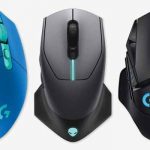Intel’s Next Unit of Computing (NUC) mini-PCs are a long-running platform that lets the big chip maker showcase how much performance and functionality can fit in a compact, minimalist desktop design. The NUC 12 Extreme Kit under review here (dubbed “Dragon Canyon” during its development) is a gaming desktop barely larger than a game console, but packing in some major firepower: a 12th Generation Intel “Alder Lake” Core desktop processor, plus the space and power delivery for a full-length graphics card. Not only that, but it’s also entirely end-user upgradable, from its SO-DIMM RAM and three M.2 storage-drive slots to its actual CPU, via Intel’s unique Compute Element platform.
Intel NUC 12 Extreme Pros and Cons
PROS
Ultra-compact for a gaming PC
Fits a full-length graphics card
Intel 12th Generation “Alder Lake” CPU elevates performance
Impressive connectivity and M.2 storage support
CONS
Only available as a barebones unit
Light-up skull faceplate isn’t for everyone
Uses DDR4, not DDR5, RAM
The Design: Honey, I Shrunk the Gaming PC
The NUC 12 Extreme Kit is a refresh of 2021’s NUC 11 Extreme Kit (“Beast Canyon”), using much the same chassis and internal layout. (See our deep-dive interview with the Intel NUC team around the time of the NUC 11 launch.) It makes the all-important jump to Intel’s 12th Generation Core Alder Lake platform, which is leaps and bounds more capable than the 11th Generation “Tiger Lake” silicon that was used in the NUC 11 Extreme Kit.
Our NUC12EBDi9 review unit features the 65-watt Core i9-12900, a lower-wattage version of the 125-watt Core i9-12900K. (Hit that link for a thorough background on Alder Lake and its hybrid architecture.) The Core i9-12900’s Performance-core (P-core) Turbo Boost is just 100MHz lower (5.1GHz versus 5.2GHz), which means that its peak performance should be similar, but it will produce less heat in long-running tasks since its base clock is much lower. (That’s 2.4GHz versus 3.2GHz; look for our benchmarks later.)
The NUC 12 Extreme Kit is also available with the Core i7-12700 (the kit dubbed NUC12DCMi7, with Compute Element model NUC12EDBi7), a likewise lower-wattage version of the Core i7-12700K. No budget-friendly (friendlier?) Core i5 options are planned, though Intel will be offering the NUC 12 Extreme Kit with Intel vPro remote management features as separate SKUs.
Start up the NUC 12 Extreme Kit—after you assemble it, of course, more about which later—and you’re greeted with a fearsome RGB-backlit skull faceplate. Love it or hate it, count me in the former; this is one brash mini-PC, and it makes no pretense of hiding that.
But if you’re in the second camp, the faceplate is removable. You can replace the skull with your own design, printed on transparency film, or simply turn off the lighting in the BIOS. The NUC’s side panels are also RGB-lit along the bottom edges, much like a modded-up car with ground-effects lighting.
Size-wise, the NUC 12 Extreme Kit is 7.4 by 4.7 by 14 inches (HWD), or just long enough to fit a full-length (12-inch), two-slot desktop graphics card. The interior volume is just under eight liters, which makes the compact 12-liter Corsair One i300 seem downright brawny.
NUC12 Compute Element
The NUC12DCMi9 we are reviewing today comes with the NUC12DEBi9 NUC12 Extreme Compute Element. It comes with a socketed processor – the Core i9-12900. This belongs to the Alder Lake (12th Generation) family, and has a 8C + 8c / 24T configuration with a 65W TDP. It can turbo up to 4.7 GHz. This Compute Element belongs to the series that started with the NUC9 generation, re-imagining the traditional motherboard in a discrete PCIe x16 card form-factor.
The Compute Element comes with a cooling shroud containing a single fan and three M.2 heat-sinks with thermal pads pre-attached. While two of those heat-sinks are in the side with the fan, the other is on the rear, behind the processor. The rear slot supports only M.2 2280 SSDs, and is connected directly to the processor. The two slots directly under the cooling shroud are PCH-connected ones. On the extreme right, we have the two SODIMM slots that can operate at speeds of up to DDR-3200 for DIMMs up to 64GB in total.
These are vertical slots (compared to the horizontal ones in the NUC9 Compute Elements), and free up valuable space that gets taken up by the M.2 slots. It must be noted that the socketed processor requires slightly larger board estate – resulting in the movement of one of the three M.2 slots in the Driver Bay (Beast Canyon) Compute Element to the rear in the Dragon Canyon. The gallery below provides additional photographs of the Compute Element and the cooling shroud.
Testing the NUC 12 Extreme Kit: Don’t Bother, This Dragon Can’t Be Tamed
No spoiler alert necessary: The NUC 12 Extreme Kit is one of the fastest, baddest mini-PCs you can buy. I paired it off against some other seriously fast compact PCs for our performance benchmarks, including the liquid-cooled, $4,999-as-tested Corsair One i300, the even more expensive Maingear Turbo, and the relatively budget-friendly NZXT H1 Mini Plus. See their basic loadouts below.
The only truly “mini” PC among them is the NUC 11 Extreme Kit. We tested the NUC 12 Extreme Kit with the exact parts we used testing that unit, so we could isolate the CPU performance differences. Most of the following analysis will focus on the NUC duo; comparisons to the others will be largely academic, since the NUCs are only sold as barebones units. Unless you use the same parts as we did—a 500GB Sabrent Rocket 4.0 SSD, 16GB (two 8GB SO-DIMMs) of DDR4-3200 RAM, Windows 11, and an Asus-brand GeForce RTX 3060 graphics card—your performance mileage will vary.
Mini-PC Excellence: Fear the Dragon (Canyon)
Even beastlier than its “Beast Canyon” predecessor, the NUC 12 Extreme Kit continues pushing the envelope for high-performance mini-PCs. Our Core i9 model showed across-the-board performance gains, thanks to its Alder Lake CPU. Despite its compactness, this mini-PC offers excellent end-user upgradability, including slots for three M.2 PCIe storage drives and most important, support for a full-length graphics card.
Now, given the NUC 12 Extreme Kit is only sold as a barebones unit, you’ll need to install your own components—memory, storage, an operating system, and a graphics card—but we found the install wasn’t all that difficult. Provided you’re willing to tackle that, the NUC 12 Extreme Kit is a marvel of a mini-PC that won’t make you wish you bought a bigger tower.
It is obviously not as good as that of an actual CPU but if you are looking for smaller size and efficient power consumption, the NUC is worth it. But it is still pretty pricey. The comparison of the performance as compared to that of an actual CPU to the NUC is not that different. The performance is almost the same.
All good things come to an end, and it looks like Intel’s Panther Canyon NUC based on the 11th Generation Core ‘Tiger Lake’ processor is one of them. With a listing from Intel confirming that the Intel NUC kit is now discontinued. Intel’s Tiger Lake-based NUCs have an interesting history.
All in all, Intel’s NUC VR 8 NUC8i7HVK is an impressive bit of manufacturing. It does exceptionally well in rendering good quality video games. That’s why it’s included in our list of the Best Intel NUC for gaming. Yet squeezing that much power into a miniature-sized device does escalate the costs.
The Panther Canyon delivers a unique combination of commanding performance, immersive graphics, fast and flexible connectivity, and innovations like wireless charging, remote control, and voice control. Finally, the pint-sized, eye-catching, do-everything home and office computer has arrived.
Also read:
- Which Podcast App is Best? Spotify vs Apple and Google Podcast
- Happy Wheels Unblocked for Desktop browsers, Android, IOS + Javascript
- How to unblock someone on facebook, instagram, tiktok, snapchat, twitter and WhatsApp
- What is a Tag Cloud? How do I make a Wordle on Word Cloud?
- What’s so Special about Alienware? what is the Best Gaming Laptop in the World?











